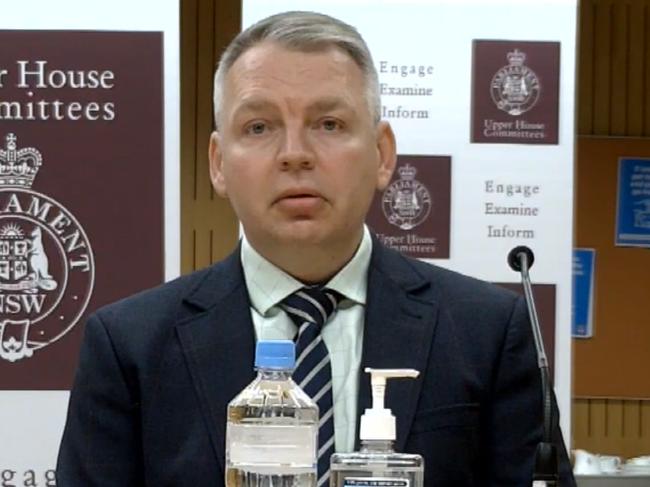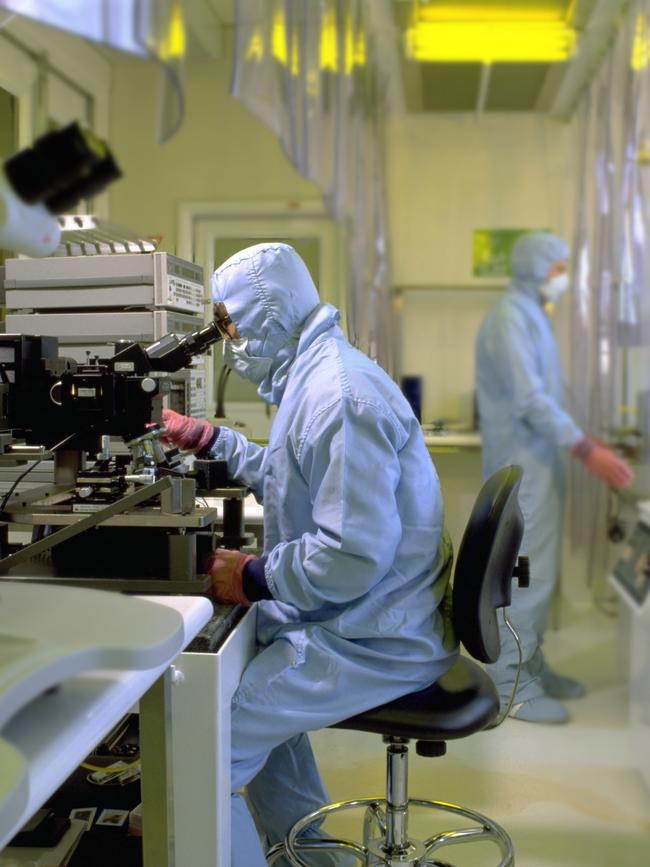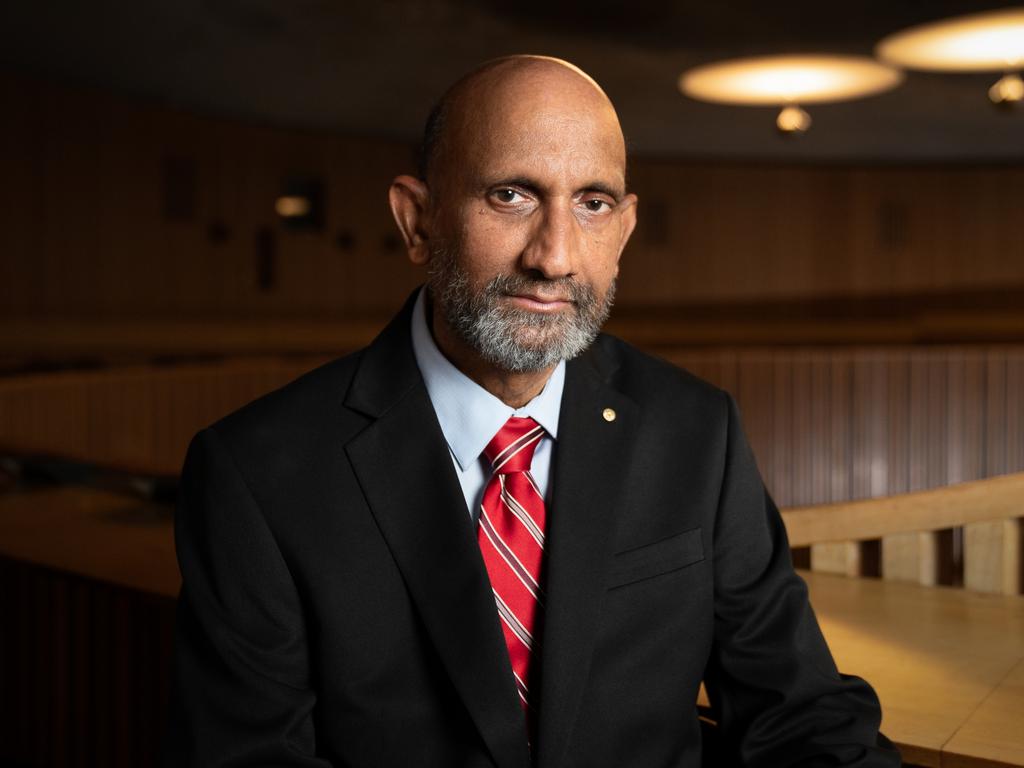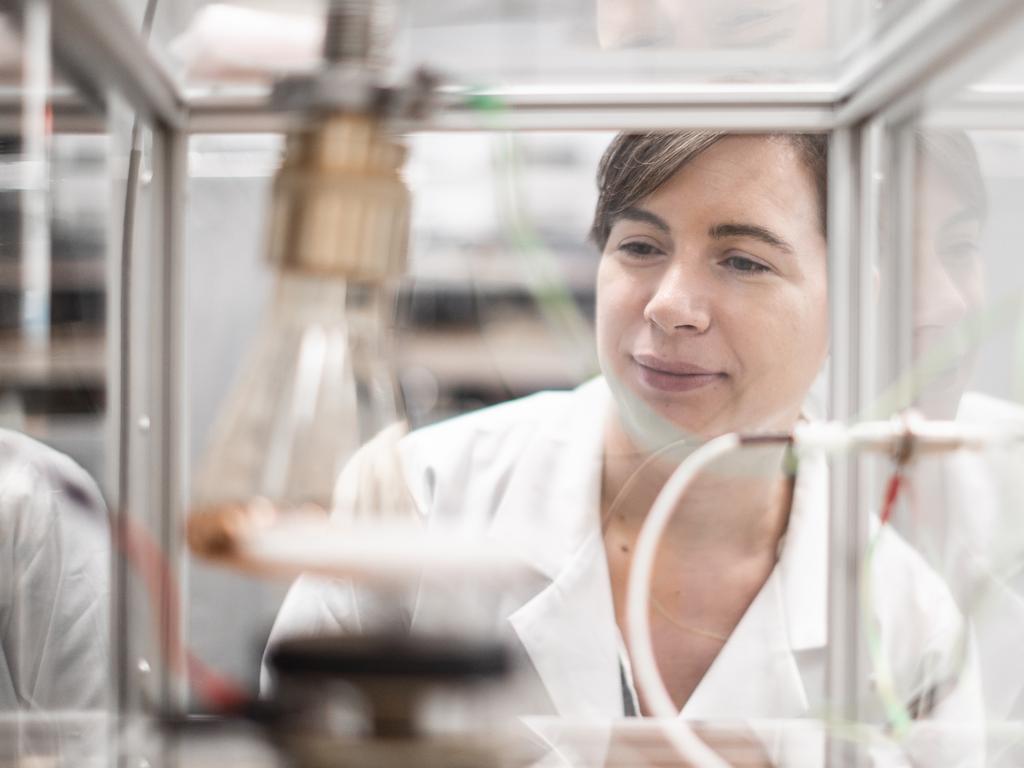Nanotechnology to detect diseases years before patients notice symptoms
Nanotechnology will teach younger bodies to detect illnesses such as cancer, Parkinsons, heart disease and Alzheimers years before patients ever notice symptoms.

For months, sometimes even years, the body is sending silent signals even though symptoms may be years away.
Until recently, we haven’t had the methods to detect these messages, which are carried in the blood and body fluids within nanoscopic bubbles that contain a cocktail of genetic fragments, lipids and proteins. But in coming years, 30-year-olds whose bodies may be raising alarm internally that a slow-growing cancer has activated within their cells will be able to head off the disease before ever becoming ill.
This is the promise of nanotechnology in medicine, which will play a transformative role in the early diagnosis of disease and precision treatments.

“The architecture of the human body is constructed of nanoblocks,” University of Sydney professor of nanomedicine Wojciech Chrzanowski says.
“We are constructed from proteins, lipids, minerals and molecules, and they are all cleverly assembled in the nanoscale. In addition, every single cell in the body is producing nanoparticles needed to control biological processes, and these nanoparticles are called extracellular vesicles.
“These EVs are tiny bubbles containing RNAs (any of a group of nucleic acids found in all living cells and some viruses), DNA, proteins, lipids and minerals – this means they contain everything that is needed to repair dysfunctional tissues or restore normal operation in the body. The cells are like factories that produce these tiny bubbles and their exact composition depends on the health of the cell.
“EVs are sent off into the body and received by other cells.

“For example, when disease happens, injured cells will send out these EVs as SOS signals and they contain the code which tells us that the cell is diseased. The body sends these very tiny blocks with this code into the blood, the skin and into the microbiome.
“And these signals are even on the surface of our skin as we sweat.”
The codes sent out by diseased cells within these tiny vesicles will be received by other cells, which will begin to follow destructive instructions, and cancer will begin to grow and spread or the body will start to break down its own neurons, eventually developing Parkinson’s disease, or perhaps the immune system will begin to destroy itself in an auto-immune process.
But in the not-too-distant future, scientists are confident they will be able to beat the diseased cells at their own game.
They’ve already refined, using nanotechnology, how to read the code contained within nanoparticles secreted in the blood, skin and gut.
Diagnostic methods based on this knowledge are in the advanced stages of development, and in a decade nanotechnology is set to play a significant role in treatment as scientists refine ways to harness the body’s own healing capacities and develop therapies with levels of accuracy and powers of penetration beyond the imaginings of current pharmaceuticals.
“The most important application of these technologies at the moment is in disease detection,” Chrzanowski says.
“Early disease detection is the key to stopping the disease in its tracks. Then we want to make sure that, having detected the disease, we then have the battery of tools and methods to overcome them when they are in the very early stages. With certain types of cancer, we are already getting to that reality.”
‘For young people, it means that diseases which may strike them as they grow older can be prevented from ever developing’
Diagnostics
So how exactly is nanotechnology able to detect disease well before it shows any symptoms? Nanotechnology is already being used in some diagnostics, mostly imaging. But in the future, major developing diseases could be detected by giving a saliva sample or carrying out a pinprick of the finger to gain a small blood sample.
Engineered nanomaterials that have the capacity via tiny, extremely sensitive sensors to detect biomarkers of disease would be added to the saliva or blood sample.
“I think in the next five years we will have more tests for different types of cancers and different types of diseases,” Chrzanowski says.
“Cancer is very important, but it’s not just about cancer, there are diseases that are pretty much untreatable at the moment – Parkinson’s, dementia, Alzheimer’s – all of these conditions. We need to really make sure that we can detect them early and we can act on them very early because these are the diseases that really compromise lives and society.”
A magic bullet?
Scientists caution, however, that nanotechnology on its own is not likely to provide the treatment panacea for most diseases. It’s more likely to be a case of making other existing or future treatments such as immunotherapy more precise, more targeted and more effective. Nanotechnology will also play an important role in monitoring the disease state.
This could be crucial in a chronic disease such as diabetes in which silent complications can rapidly develop. Scientists have already developed “smart insulin” using nanotechnology that can detect instantly if glucose levels are too high without the need for external monitoring devices.
Nanotechnology is such a powerful future tool for precision medicine because of the way scientists can manipulate nanotherapeutics to pinpoint diseased cells. In this way, extracellular vesicles can be used as vehicles for the delivery of biomolecules and drugs that support the body to repair its own tissue.

Through this process, the engineered EVs can improve the efficacy of delivery of therapeutics such as mRNA (messenger RNA) drugs or vaccines, and immunotherapies.
The key to these nanotherapeutics’ extraordinary precision lies in a process in which the surfaces of the nanoparticles are “decorated” with specialised molecules that recognise a target via the particular receptors of diseased cells. This is why they are they are considered “smart” nanoparticles.
It not only means the drug precisely targets the diseased cells but it also reduces the potential for adverse side effects.
“When we flush the nanoparticles through the body, the cells engulf them,” Chrzanowski says.
“And when they are eaten, they are unpackaged, and the therapeutic cargo inside the capsule is released.
“The body’s ability to produce these tiny and smart delivery vehicles, which are also multifunctional, far surpasses any human invention.”
Lifesaving nanotherapeutics on the horizon
Among the biggest killers of Australians is heart disease and stroke, and occasionally a cardiovascular health catastrophe can occur in younger people who least expect it and have no warning signs.
Monash University’s Australian Centre for Blood Diseases NanoBiotechnology Laboratory head Christoph Hagemeyer is the chief investigator in a clinical trial testing targeted thrombolytic and brain-rejuvenating nano-carriers for the treatment of stroke.
Such therapies could be delivered in ambulances in the future and prevent the devastating consequences of heart failure following a cardiac crisis or the significant disability that often follows a severe stroke.
They work by triggering the body’s own “clot-busting” defences.
“What these therapies do is they detect the activity of an enzyme which is highly active in the clotting cascade,” Hagemeyer says.
“So if there is a clot developing, there’s one particular enzyme called thrombin which is very, very active. And we use that to degrade our particles which are loaded with the drug. So we’re kind of hijacking the coagulation system to initiate the clot buster.”
Healthier, longer lives
Scientists are in no doubt that once its full application is realised, nanotechnology will transform health systems around the world, detecting diseases before their devastating effects take hold, lowering costs, simplifying treatments to be more targeted and effective, and saving lives. For young people, it means diseases that may strike them as they grow older can be prevented from ever developing.
“It will mean having your health in your hands and being able to continuously monitor it, and if something happens, dealing with it in the very early stages,” ARC laureate professor and Melbourne Nanofabrication Facility scientific director Nico Voelcker says.
“It will mean healthy, longer lives, more years of enjoying your life as a healthy individual without worrying about going to the GP every second week.”







To join the conversation, please log in. Don't have an account? Register
Join the conversation, you are commenting as Logout